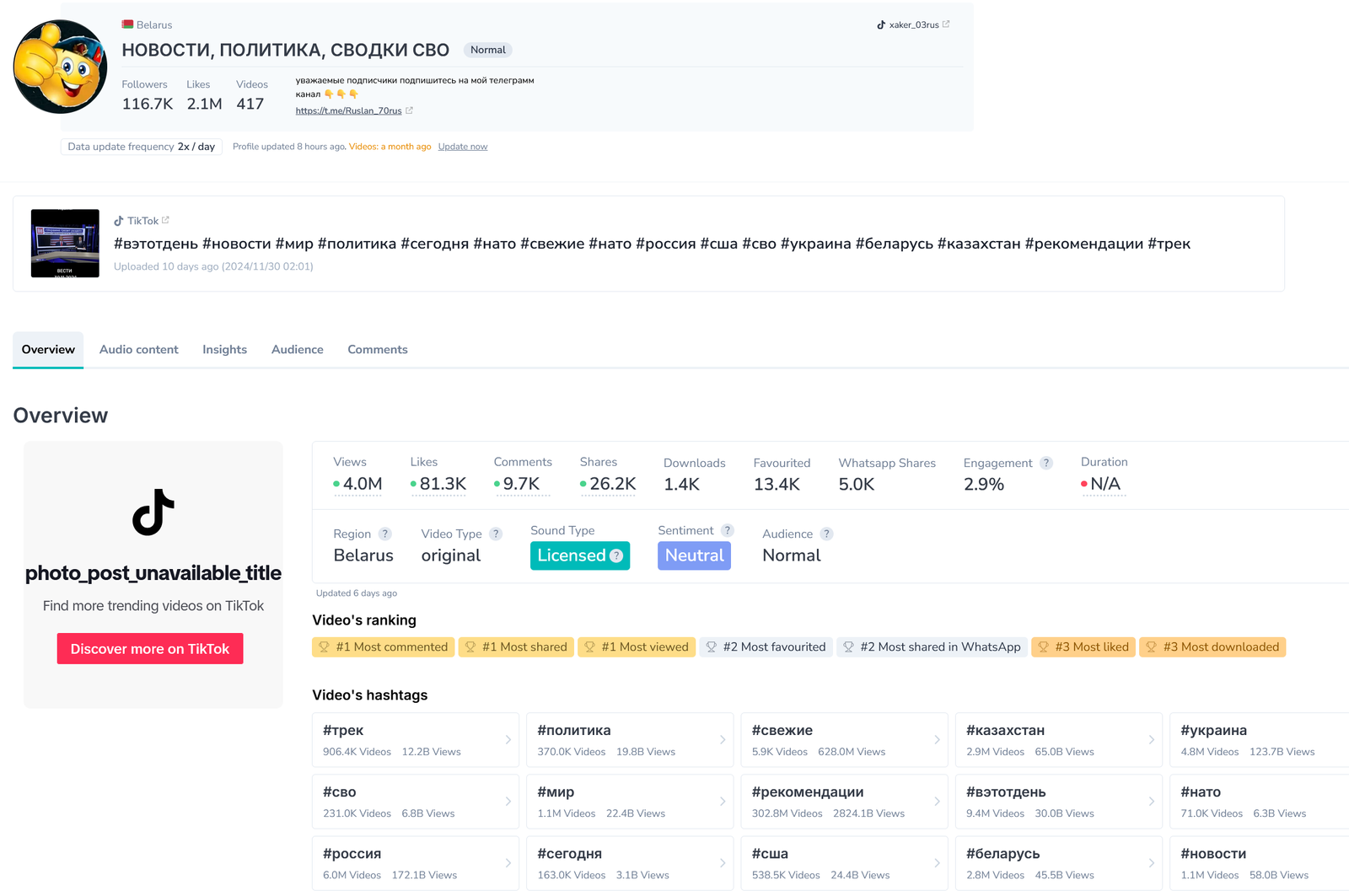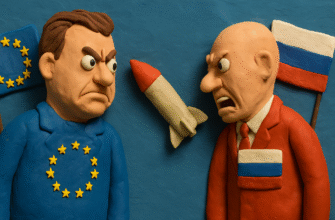During the analysis of the use of the hashtag #беларусь on TikTok in November 2024, it was revealed that 534 studied hashtags were used in conjunction with the hashtag #nato.
The video with the most views (over 4 million) had the main narrative: Under the guise of freezing the conflict, NATO is preparing a plan to occupy Ukraine.
The video starts with the following statement:
Europe must prepare for the partition of Ukraine, according to Germany’s Bild. The article states that large territories have come under Russia’s control, and Kyiv has no chance of reclaiming them militarily. According to the authors, Donald Trump, upon taking office in the White House, will also insist on a deal. Details of the West’s plan to divide Ukraine among Romania, Poland, Germany, and Britain were disclosed today by the foreign intelligence service.
Breaking down the publication structure:
Verdict: Completely Unreliable Information
VERDICT #1: UNVERIFIABLE SOURCES The text relies on anonymous intelligence data and unnamed experts, with no possibility of verifying the information’s reliability.
VERDICT #2: MANIPULATIVE TECHNIQUES
The use of emotionally charged language, historical trauma, and unfounded parallels to amplify audience impact.VERDICT #3: LACK OF EVIDENCE
All key claims about territorial division plans and the intentions of Western countries are not supported by documentary evidence.VERDICT #4: PROPAGANDA ORIENTATION
The text creates an image of external threat by demonizing Western countries, blending real facts with unreliable information.
Fact-checking Rating Scale
General information about this video:

The analysis reveals that this toxic account uses a set of geolocation hashtags, including #беларусь.
Target audience of the video:

The disinformation content of the video appears to be primarily directed at audiences in Ukraine, Kazakhstan, the Russian-speaking population in Germany, and then Belarus.

The original article in Bild is based solely on the private opinion of American political scientist Ian Bremmer (Ian Bremmer).
Attention should be drawn to how this opinion was immediately picked up by Russian and Belarusian information outlets:

Ian Bremmer is also listed as the author of Eurasia Expert, which describes itself as an information-analytical publication and a scientific journal on the Eurasian region.

The editorial policy of the publication is evident in its logo and the use of symbols associated with Russia’s invasion of Ukraine.
Now let us evaluate the TikTok video text for disinformation narratives that can be identified and analyzed:
- Partition of Ukraine as inevitability: The text claims that Europe must “prepare for the partition of Ukraine,” creating the impression that such a scenario is inevitable. This may cause panic and disorientation among the Ukrainian population and the international community.
- Western support for partition: The claim that Western countries like Poland, Romania, Germany, and Britain have plans to seize Ukrainian territories is based on speculation and lacks concrete evidence. This may portray the West as aggressors, constituting disinformation.
- Comparison with historical events: Comparing the current situation to Ukraine’s occupation during World War II and the use of “special squads” from Ukrainian nationalists is manipulative. This creates associations with historical trauma and may evoke negative emotions, hindering objective perception.
- Prophetic statements: The claim that “legitimate Ukraine” no longer exists is extreme and disinformative. It ignores the existence of the Ukrainian state and its international recognition.
- Terminology usage: Terms like “peacekeepers” in the context of troop deployment may be used to justify aggression. This creates a false impression that military intervention is a benevolent act rather than a threat.
- Panic and fear: The text uses fear as a tool, claiming that “the Russian Ministry of Defense” has developed plans to eliminate Ukraine. This fosters an atmosphere of fear and uncertainty, which may be used to manipulate public opinion.
- Denial of Ukrainian identity: Claims that Ukrainian historians acknowledge the destruction of civilians by Ukrainian nationalists may be used to undermine Ukrainian identity and legitimize aggression against Ukraine.
- Criticism of Western policies: The text criticizes Western policies, particularly NATO, which may be interpreted as disinformation if the context and perspectives of various parties are not considered.
Overall, the text represents a complex set of disinformation narratives aimed at creating a negative image of the West, undermining Ukrainian identity, and shaping public opinion in favor of Russian aggression.









